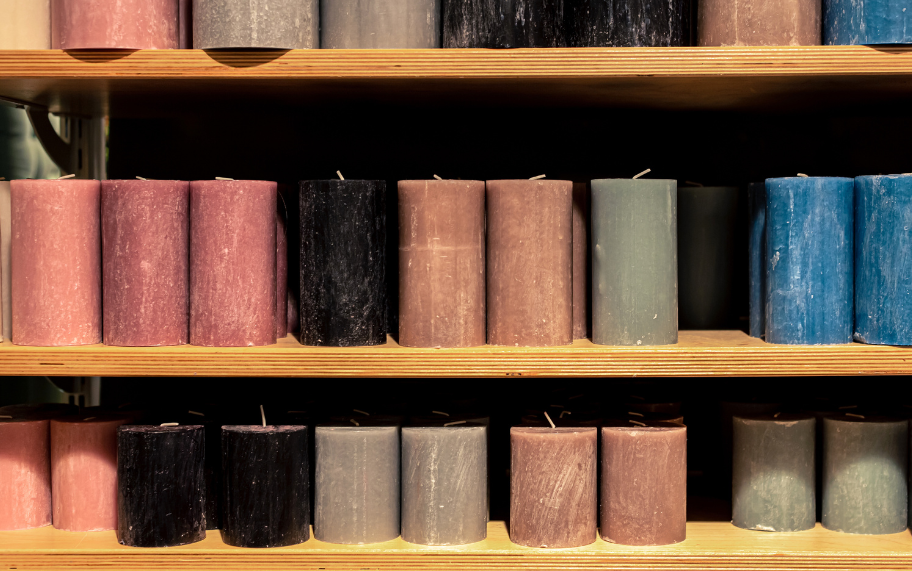How to Price Your Candles

It can be a daunting task for a new business to figure out how much they should be charging for their unique candle creations. There are a number of factors that need to be considered before settling on just the right price. It’s very important to weigh each element carefully and precisely to ensure that you select a price that will not only cover your costs and turn you a profit but will also help build the ideal perceived value among your target market. Here we will evaluate each component you will need to review when calculating the best price for your products.
Calculating Your Costs
The first step when determining your pricing strategy is to accurately calculate your costs. There are 2 types of costs that need to be considered when deciding what to charge for your candle. They include your variable costs and your fixed costs.
1. Variable Costs
Variable costs are specific to the batch of candles you are making/selling and include things like the cost of the wax, fragrance oil, wicks, vessels, labels, lids, dyes, etc. Other costs that should be incorporated into this number include those associated with the printing of your labels, shipping charges, packaging and marketing. If you plan to sell your candles at a craft show or on an e-commerce website, you should factor in your rental and listing fees here as well.
Once you have added up all the costs associated with the making and selling of your candles, divide this number by the number of candles in your batch to determine how much it costs to make each candle. This number is your base cost and is the minimum amount that you must charge in order to break even. Obviously, most people don’t go into business to only cover their costs, so this is just going to be your starting point for deciding what to charge.
2. Fixed Costs
Fixed costs also need to be considered when determining what you will charge for your candles. While these costs are not necessarily directly related to the batch of candles you are making/selling, they will ultimately eat into your profits making it necessary to keep them in mind when coming up with a price.
Things you would cover in your fixed cost include insurance, rent and utilities on a studio space, website fees if you have your own online store, labour costs, etc. It can be a little more complicated to figure out how to incorporate these costs into your pricing than it is with your variable costs.
Some might tell you to add up and divide your fixed costs in the same way that you would your variable costs; however, that might not work for every candle maker. Will this batch of candles need to cover all of your costs for the month? Or will you be making several batches throughout the month that can contribute to covering those costs? Are candles your only source of income? Or are they just one of many items you include in your product lineup? There is no c solution on how to incorporate your fixed costs into your pricing. Each candle maker will need to determine the best way to do this for their personal business model.
Target Market and Perceived Value
The truth is, every candle is made up of pretty much the same things: wax, wicks and fragrance oil. So why is it that one candle company is able to charge $20-$25+ for basically the same product that another candle company only charges $10-$15? The simple answer is that it’s because of the consumers that are being targeted by the brand and the value that is associated with that brand’s products.
Before you start crunching more numbers, it’s important to sit down and really think about who it is that you are planning to target as a customer and what kind of perceived value you would like to create. Try to get as specific as possible by asking yourself who they are, what age group they belong to, where are they located, what are their interests and how much are they willing to pay for a candle. Take a look at competitors who target a similar market and see what they are charging for comparable products.
If you plan to target high-end luxury shoppers, you wouldn’t want to attach a bargain-basement price tag to your candles as this could give the impression that they are of lesser quality. In the same regard, if you are planning to target a more value-conscious consumer, you wouldn’t want to price yourself out of the market by charging too much.
One easy way to help increase the perceived value of your products is to demonstrate to your customers that your product is more than just a thing that they burn. Give them the idea that there is a whole experience that comes along with using your product in order to add more value to it. With candles, it’s great to appeal to the emotions that will be evoked from the scent of the candle.
For example, you could describe your candle simply as a “Eucalyptus Lavender Candle.” Alternatively, you could describe it as “an exquisite blend of Eucalyptus and Lavender that summon feelings of pure relaxation that will return you to a state of conscious well-being with every burn.” Do you see how one description makes it sound more valuable than the other?
Another way to increase your perceived value is by giving your product a look that will appeal to the target audience you have selected. You may notice that often high-end candles have a very minimalistic appearance that includes simple labels in neutral colours that utilize modern fonts.
If your candle looks and sounds like there is something special and unique about it, you will see that people are willing to pay more money to buy it.
Determine Your Profit Margin
Once you know how much your business costs are, it’s time to start considering how much money you would like to make in addition to those costs. There are a few different ways to approach this and we’ll explore some of those ways here.
Standard Pricing Approach
The traditional way to price your candles is to take your material cost per candle and multiply that number by 3 if you are selling your candles retail or by 2 if you are selling them wholesale.
Retail vs Wholesale
If you are not familiar with the terms “retail” and “wholesale”, selling your candles retail means that you are selling them directly to the consumer or end user. When you sell your candles wholesale, this means that you are selling them to a third party who will then be selling them to the consumer.
You might ask why would someone sell their candles wholesale when you will make less money in profit? When you are selling directly to the consumer, you will need to charge more because you are the one who is taking on the responsibility to market your products in order to find customers, paying all the expenses and fees that come along with whatever sales channel(s) you choose to use. You will pay for website costs, rent/mortgage and utilities for retail locations, booth fees, costs that come along with using certain payment methods, etc. It also may take a longer period of time to sell through your entire batch.
When you sell your candles wholesale to a third-party retailer, they will take on the responsibility of all of the above costs, and all that you will be responsible for is the cost of making your candles and delivering them to the retailer. You will sell your entire inventory in one place and get your payment right away. Obviously, they will want to make a profit as well, which is why you can’t charge as much when selling wholesale as you can when you sell them retail. There are positives and negatives with both retail and wholesale. You will need to weigh the pros and cons before determining what is best for you and your business.
A similar but slightly different way of using the traditional pricing method is to decide on a specific amount that you would like to profit from each candle and add that number to your material cost amount in order to determine the retail and wholesale price. For example, if you have figured out that it costs you $3.00 to make each candle and you want to make $20 retail or $15 wholesale on each candle, you would simply add the profit amount to the cost per candle in order to establish your price. In this case, $23 retail and $18 wholesale.
Monthly Profit Approach
Another way to deduce what to charge for your candles is by defining a profit goal for a certain amount of time and working backwards from there. You would begin by calculating all of your costs for that time period. Next, you need to decide how much money you would like to make by the end of that time period and add this amount to your costs. From there, you would divide the total by the number of candles that you realistically could sell within that time frame, and voila you have your price.
Competitive Pricing in Your Market
This pricing strategy will focus on pricing your products based on the market you will be selling them in. In order to use this method to price your products, you will need to do some research and know definitively who your target market is, what type of candles they like to buy, how much they are willing to pay for those candles, who your competitors are, what type of products they offer and how much they charge for their products.
Once you have a clear understanding of the answers to all of the above questions, you will need to reflect on how your business will compete in this marketplace. Will you come in slightly lower in price in order to entice customers to buy your candles instead of your competitor’s? Or will that give the impression that your candles aren’t worth as much? You could come in slightly higher in price to convey that your candles are more valuable than others; however, this runs the risk of being seen as too expensive and losing out on sales. Finally, you could price your candles the exact same as your competition, going head-to-head vying for the consumer’s attention.
With this type of pricing strategy, you will need to regularly review your costs, sales, and profits and reevaluate your answers to the questions above in order to make adjustments based on what works for your business and what doesn’t in the particular market you are competing in.
Final Thoughts
The marketplace and costs are constantly evolving. That is why it is important for you to assess your pricing strategy intermittently and make changes when necessary. You need to be flexible in order to pivot when demand calls for it.
Remember that the price that you give your candles is a statement that shows your belief in the value of your product. By giving your candles the most appropriate, well thought out price, you are not only displaying your confidence and pride in your product but also properly compensating yourself for all the hard work that went into making your unique creations. If you undervalue your candles, customers will too. So do your due diligence and know your (and your candle’s) worth!






